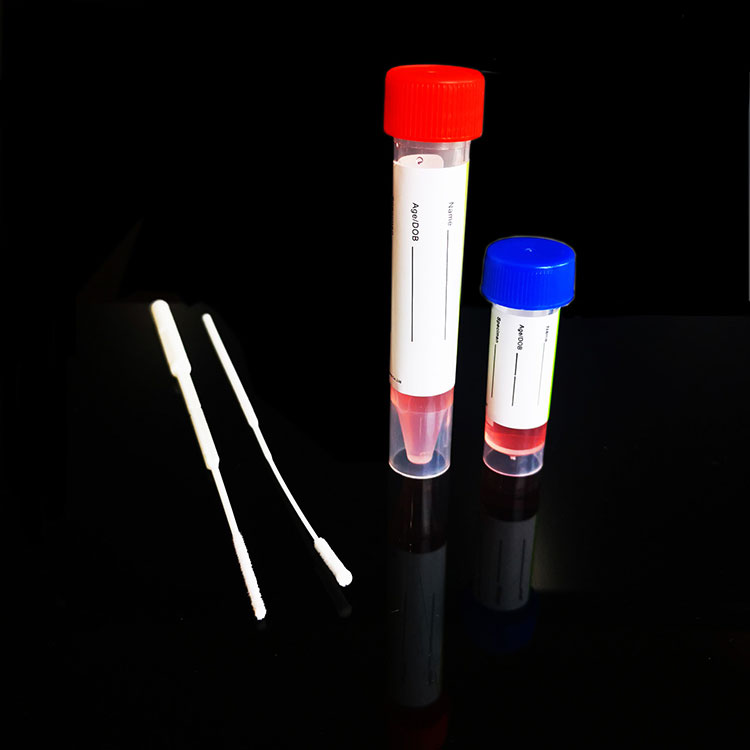Nasal swabs have 3 significant advantages over throat swabs
2022-02-25
Today, Ningbo Hema Scientific Instrument Co., Ltd. is here to tell you 3 significant advantages of nasal swabs compared to throat swabs.
Our Nasal Throat Test Swab Kit With Tube product is a great choice for you!
Since the epidemic, the unfamiliar word "nasal swab test" has entered our field of vision. At present, the most commonly used nucleic acid test is the nasal swab test. After the test is completed, the sterile cotton swab will be processed as medical waste and cannot be reused.
However, a news that broke out recently was called "no bottom line" by netizens!
According to reports, staff of a medical company in Indonesia were found to be repeatedly using sterile cotton swabs when conducting nasal swab tests on airport passengers. Currently, more than 9,000 passengers are expected to be affected.
After investigation, the Indonesian police found that the employees involved first used sterile cotton swabs to perform nasal swab tests on passengers every day, and then cleaned the used sterile cotton swabs with alcohol once, and packaged them again for use by the next batch of passengers. This behavior is outrageous.
1. What are the dangers of reusing nasal swabs?
The nose is a barometer of human health. When there are lesions in the body, the color of the snot changes to yellow or green. Nasal swabs are a test sampling method used to assess the presence of respiratory viral or bacterial infections by collecting samples from the mucosal surface of the respiratory tract.
The long handle of the nasal swab is made of plastic or metal and the tip is polyester, rayon or flocked nylon. Before the operation, the testing personnel will stick a label on the sampling tube. If there is nasal mucus in the nasal cavity of the test subject, it must be blown off with a tissue first.
During the test, the tester takes out the nasal swab from the package, tilts the subject's head slightly back, closes his eyes lightly, and then inserts the nasal swab along the nose, extends to the bottom of the nasopharynx, and leaves it for a few seconds. , fully absorb the secretions, and finally gently pull out while rotating the nasal swab, insert the sampling tube, and send it for testing.
As a rule, nasal swabs cannot be reused. If the nasal swab is reused, the consequences will be disastrous.
On the one hand, it increases the risk of viral infection. Previously, a British research team found that two types of cells in the nose may be the initial infection site of the new coronavirus; in addition, clinical studies have found that the viral load of nasal swabs is significantly higher than that of the pharynx. Swabs, if nasal swabs are reused, it is likely to cause cross-infection and expand the scope of infection.
On the other hand, it may lead to inaccurate test results, false positives or false negatives. If the test result is false positive, it may cause psychological panic and unnecessary treatment to the testee; while false negative may prevent the testee from discovering that they have been infected in time and miss out.
At the same time as the best treatment time, even more people are infected.
2. Is the effect of nasal swab and throat swab the same? How to choose?
At present, in addition to nasal swabs, throat swabs are also used for nucleic acid detection of new coronary pneumonia. It should be noted that the sampling paths of throat swabs and nasal swabs are different.
On the whole, nasal swabs are more advantageous than throat swabs. First of all, because the throat swab is in the process of testing, the test subject is prone to dry cough, vomiting and other uncomfortable symptoms, while the nasal swab test subject is better tolerated, and there is basically no discomfort.
Second, because nasal swabs rarely cause uncomfortable reactions, they can stay in the pharynx for a longer time, helping to obtain sufficient samples and improving the accuracy of detection. For throat swabs, if the collection operation is not standardized, the result may be "false negative".
Furthermore, for the testing personnel, since the sampler can stand behind the patient's side during sampling, and the patient only needs to expose the nostrils, the risk of exposure is relatively low, and the risk of infection is also lower.
As for which detection method is more suitable for him, Jiang Fachun, deputy director of the Qingdao Center for Disease Control and Prevention, said that nasal swabs are more suitable for large-scale screening. Both detection methods can achieve the same effect. The difference is mainly in the concentration and depth of collection. You can choose according to your actual situation.



